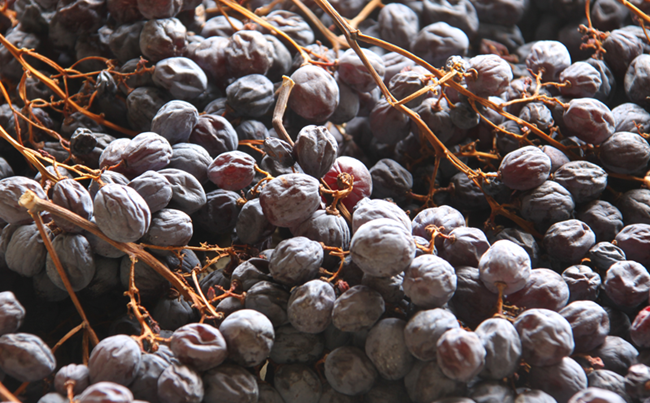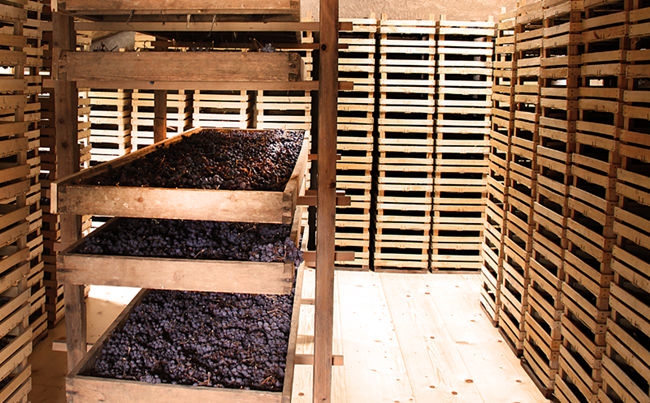Most of the wines on the market are made from fresh wine grapes, but did you know that raisins can also be used for wine making? However, the raisins here do not refer to the raisins we eat in our daily life, but to the dried wine grapes. This kind of glucose is concentrated, and the flavor substances are highly concentrated. It is a unique raw material in wine brewing.
TECO is a modern enterprise specializing in cellar design, winery design, wine cabinet customization, wine rack production and installation. It is a professional cellar customization enterprise that focuses on the field of wine storage. It is a wine storage expert around you. With our own core technology and brand, and the pricing power of the brand, we can provide you with more preferential and cost-effective products and services, and even directly to you at the factory price. Welcome to consult!
1、 Historical origin

The history of wine making with raisins can be traced back to more than 3000 years ago. At that time, in the Mediterranean region, ancient Greece and ancient Egypt, the picked grapes were put on straw mats to dry, and then the dried and shrunk fruits were broken into wine. In 800 B.C., the ancient Greek poet Hesiod described it as "the heavenly nectar of Cyprus". Cyprus is a small island country at the border of Asia and Europe. At that time, winemakers would use the way of twisting the stem to block the juice from entering the fruit, so that it dried and shrunk, or spread out the fruit to dry after picking. In the 21st century, this labor-intensive air drying process is still preserved in some regions and wineries. However, this process is very time-consuming and the number of grapes that can be successfully dried is very small, so high-quality raisin wine is often very rare and expensive. Up to now, the technology of using air dried grapes to make wine has been quite mature. Some wine producing countries have produced raisin wines of various types and styles.
2、 Air drying process

One of the common air drying processes is to leave the fruit on the vine for natural air drying, and then harvest it after the grapes are dried on the vine and the sugar is highly concentrated for brewing sweet wine. This process has specific requirements for weather conditions. Grapes must be air dried in warm and dry autumn, otherwise they will be easily infected with Botrytis cinerea. In Sauternes, France, if the grapes are not successfully infected with noble rot fungi, some wineries will use this method to help the grapes concentrate sugar and brew sweet wine with rich flavor and wonderful taste. Wines brewed in this way are sometimes marked with "late harvest" on the label. In addition, the picked grapes can also be spread on straw mats and dried outdoors, or the grapes can be placed in a dry and ventilated room for air drying (this air drying process is widely used in Valpolicella, Italy, and is locally known as the "dry vine method"). After air drying, the grapes lost a lot of water, and the sugar and flavor substances in the fruit were concentrated. Therefore, the wine produced has full body, high wine precision and rich flavor.
3、 Classic production area
Italy
The wine made from air dried grapes is collectively referred to as passeto wine in Italy, and is brewed by the dry vine method. Different types of passeto wines are produced in different regions of Italy. Among them, the most famous one is amaroni in the valpolichella region. The "a" in the famous Italian wine "abbbc" refers to it. Amaroni is brewed by Italian local varieties Covina, covinoni and rotinella, and sometimes a little molinara is added. The taste of the finished wine is slightly bitter but full-bodied, as if drinking a cup of mellow coffee. The complex aroma of the senses and the melting warmth brought by high alcohol precision are even more memorable.
Greece
Ancient Greek poets have tasted the beauty of air dried wine since the 8th century BC, which confirms the long history of air dried wine in the Mediterranean. Today, Santorini in Greece is famous for producing Vinsanto, which is mainly brewed by the local white grape variety astico. Before brewing, the grapes will be dried in the sun for up to 14 days, and the liquor will be put into oak barrels for maturation for at least 2 years. The wine is balanced between sour and sweet, with some oxidized flavor characteristics of nuts and caramel.
France
Straw wine is a common name of air dried wine in France. The reason why the word "straw" is used is that the wine grapes of this kind of wine are usually placed on straw mats for air drying after picking. Rice straw wine usually has a wine precision of no less than 14%, and needs to be aged for three years (including 18 months of oak barrel aging). The wine shows honey, spicy bread, fruit cake and a hint of nuts, with pleasant acidity, sweet and delicious. Jura is a classic producing area for this kind of wine. The local straw wine is usually made from the mixture of white grape Savannah, red grape Pusa and internationally famous white grape Chardonnay, and occasionally a small amount of trusso is added.